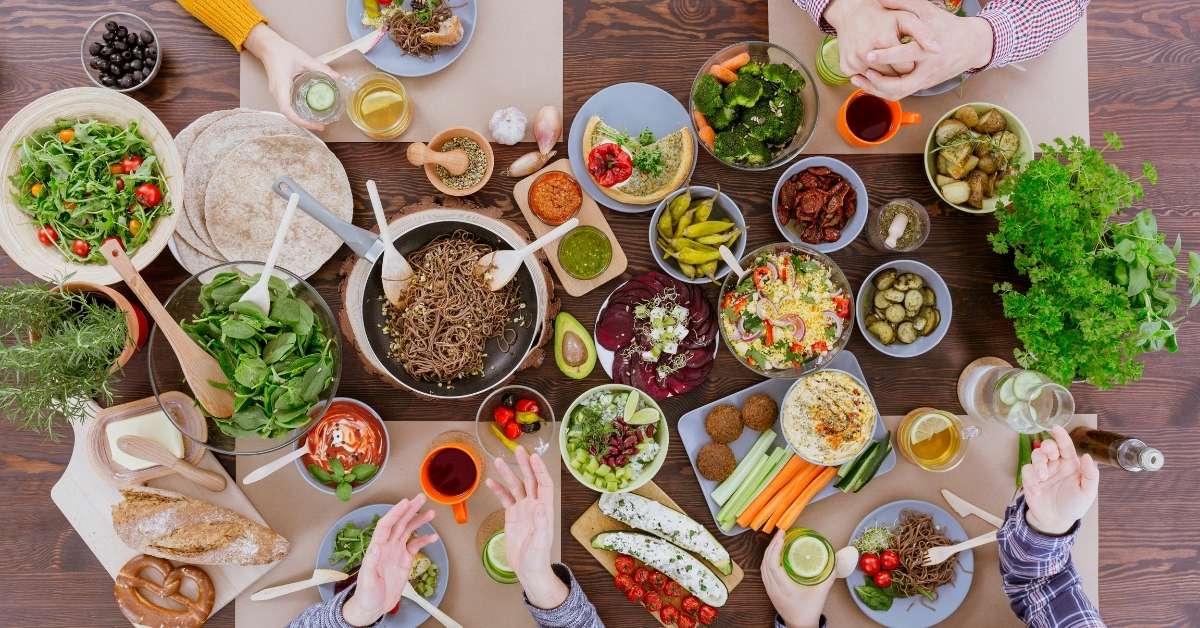

When I became a plant-based eater years ago, one question plagued me: How can I take this diet on the road? As a journalist for whom travel is a necessity, I’m usually packing my bag every three to four weeks, traveling domestically and internationally. My trips are also often hosted, meaning that I don’t have much control of where I’m going to eat, which only adds to the dilemma.
Fortunately, plant-based eating is such a worldwide movement these days that it’s easier than ever to follow this lifestyle on the road. That doesn’t mean there aren’t challenges, though. When I was in Hungary on a walking tour recently, for instance, the guide asked any vegetarians in the group to raise their hand during his discussion about Hungarian food. Though I’m technically vegan, I raised mine, the only one in roughly 30 folks. The guide then proceeded to apologize, saying I was in the wrong country, as Hungary is a meat-loving mecca. And he was right, as my main option on most menus was a tomato and cucumber salad.
So what’s a plant-eating road warrior to do? Here are a few of the strategies I recommend taking with you on your next trip:
- Pack food: Dietitians have been forever warning travelers, especially those who have to fly, to bring healthy food with them, but it’s even more crucial for plant-based eaters who may have less choices. I always pack oatmeal (both squeezable – I love Munk Pack – and dry that requires only hot water, which most hotels have in the lobby for coffee hour or you can request a hot water heater, even a fridge, for your room), nuts and seeds, plant-based energy bars (though I don’t like to eat these all the time, they do have their time and place), nut butters, and dehydrated fruits in my suitcase. Meanwhile, in my backpack, I stash carrots; a homemade hummus wrap or sandwich with nut butter other than peanut butter (in case somebody on board has a peanut allergy) and fruit (make the sandwich with frozen bread so it won’t get smooshed) if I’m traveling during a meal and will have either no or limited options; and nuts and seeds. By the way, I’m always asked if food will make it through security at airports, and the answer is yes. One caveat? Produce can’t be carried from one country to another so avoid having it on you when you go through airport security.
- Carry food on you: Pull from your packed food stash and always have sustenance with you when you’re heading out for the day. I put nuts and seeds (which I relied heavily on in Hungary) and plant-based energy bars in my daypack. One tip? Avoid bars with chocolate if you’re going to be out for a few hours on a warm day or else you’ll have a melted mess on your hands.
- Contact airlines and cruise ships before you travel: Airlines and cruise ships are used to dealing with so many different diets, but they often need to know in advance so give them a heads-up you’re coming. If you’re loyal to one airline, for instance, make sure you’ve designated “vegan” (or no dairy, no meat, etc.) in your food choices. I fly Delta the most, and not only do they provide delicious vegan meals on long flights, I also get served first, sometimes an hour before the regular meal comes out, which means I can get to sleep faster if I’m traveling overnight. Cruising? Place your dietary request in your profile, and you’ll be surprised how well many of the cruise lines will take care of you. Once you’re on board, you might even ask to speak to a food manager to guide you through your options.
- Learn to say “I’m a vegan” in foreign languages: Yes, I’m a plant-based eater, but it’s easier to tell people in other countries, especially at a restaurant, that I’m a vegan. That’s why I always make sure I know how to say “I’m a vegan” in the language of the country I’m visiting. I’ll also write down words of animal products in that language so I can also keep an eye out for them and communicate with wait staff what I don’t eat.
- Be a restaurant detective: This is no different than what you should do at home, researching restaurants and checking menus online before you visit. Trouble is, though, you’re more dialed into the local dining scene in your hometown than you are in a new city. That’s why I always do pre-trip research on restaurants in places I’m visiting. I’ll do online searches with “vegan” and the city’s name, visit Yelp, and hit HappyCow.net which maintains a database of vegan restaurants around the world.
While it’s no longer as much a challenge to travel with a plant-based diet, there is still one lingering one: Criticism from others about “missing out” on eating the specialty foods of wherever you’re visiting. Missing out on cruelty to animals, environmental damage and harm to my health? No thanks. Besides, this diet has opened new doors in my travels, exposing me to so many unique dining experiences that I would never have had otherwise.
Copyright 2025 Center for Nutrition Studies. All rights reserved.
Deepen Your Knowledge With Our
Plant-Based Nutrition
Certificate
Plant-Based Nutrition Certificate
- 23,000+ students
- 100% online, learn at your own pace
- No prerequisites
- Continuing education credits









